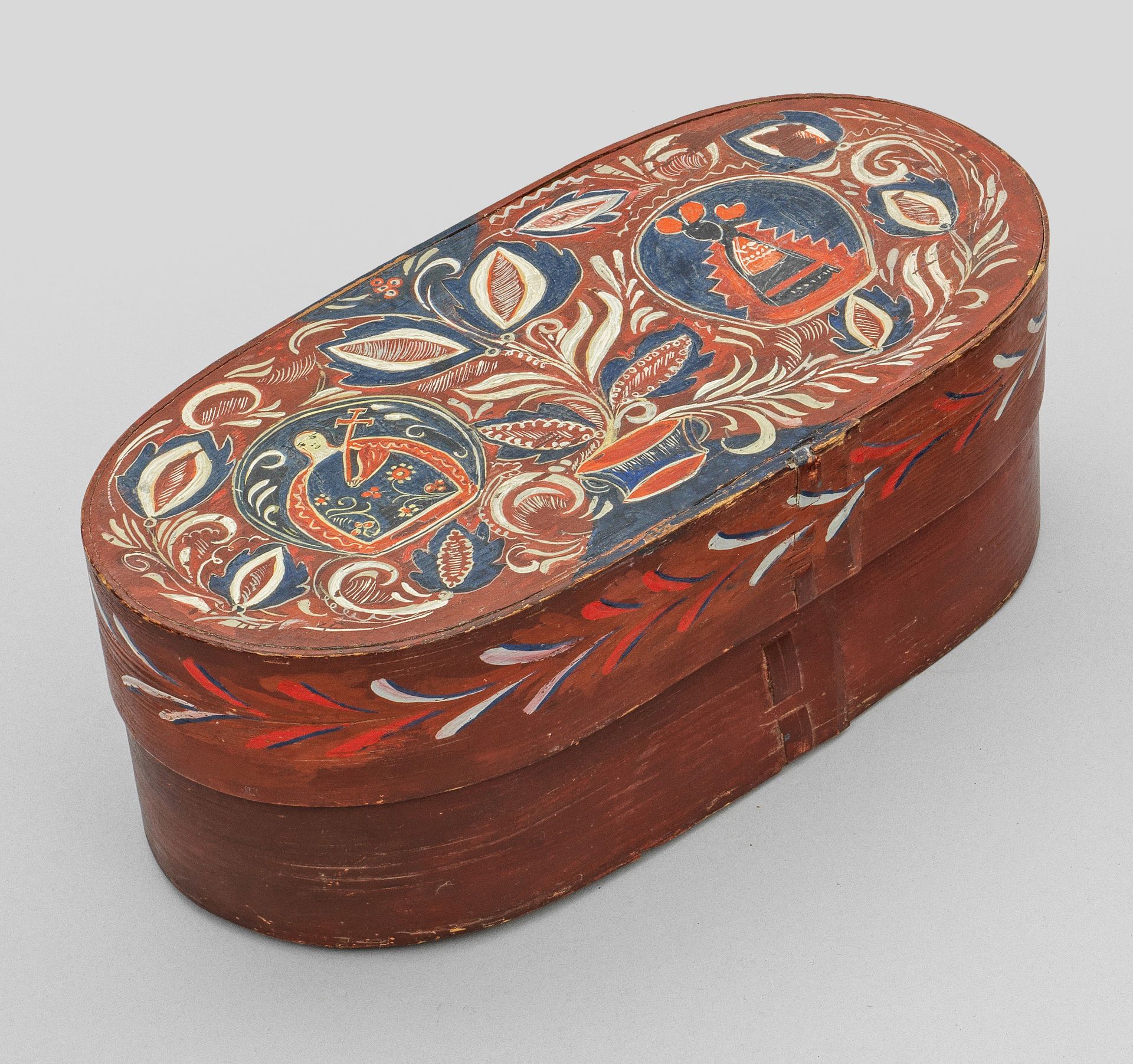Description
Chipboard box with depiction of the Holy Family in softwood. Oval body. Polychrome painting. Medallions with the Holy Family on the lid plate, surrounded by moving flowering branches on a red background. Decorative border around the rim of the lid. Signs of wear due to age. L. 36 cm, w. 18 cm, h. 13 cm. Provenance: largest North German private collection of chipboard boxes, exhibited at the Schloss Museum Wolfenbüttel in 1999. A South German chipboard box with medallions of the Holy Family. Age-related signs of use. South Germany. 19th century.
3230
Chipboard box with depiction of the Holy Family in softwood. Oval body. Polychrome painting. Medallions with the Holy Family on the lid plate, surrounded by moving flowering branches on a red background. Decorative border around the rim of the lid. Signs of wear due to age. L. 36 cm, w. 18 cm, h. 13 cm. Provenance: largest North German private collection of chipboard boxes, exhibited at the Schloss Museum Wolfenbüttel in 1999. A South German chipboard box with medallions of the Holy Family. Age-related signs of use. South Germany. 19th century.
You may also like
